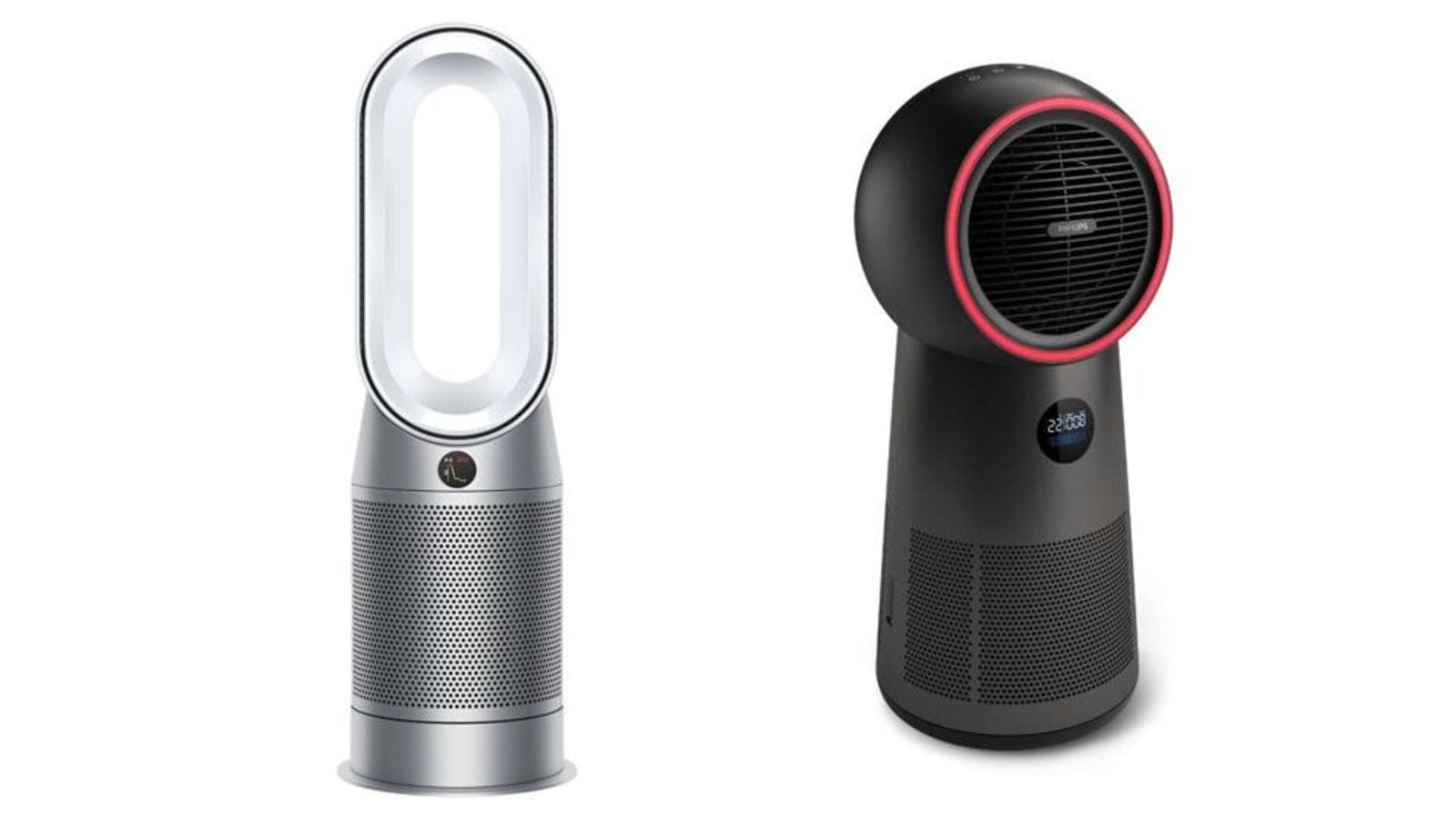Why is it so difficult to make an air purifier that is also a heater in winters?
This is one convergence that hasn’t happened at the expected pace. The air purifier, a necessity in our homes. The good old room heater is very much required in the winter months. The two have largely remained as separate devices. You’ll need both in your home. Unless you consider the Dyson air purifier range that offers a heater built-in or more recently, a new air purifier from Philips that also lets you heat the room’s air.
British tech company Dyson is now selling the third generation of air purifiers in India that have the heating option, too. First was the Dyson Pure Hot+ Cool (that was the HP04 model), followed by the Dyson Pure Hot+Cool Cryptomic, and now the latest gen, the Dyson Purifier Hot+Cool.
Philips has only now caught up, with the launch this week of the Philips 2000 Series 3-in-1 Purifier (this is the one with model number AMF220/35). In a way, this is also adopting a lot of the Dyson’s methods – bladeless design and 350-degree oscillation.
The anatomy of an air purifier
If you have ever peeked inside an air purifier, it is one of the simpler devices at play in your home. There is a large fan, which is much like the fan and its working in your split air-conditioner (albeit in a different size), which sucks in air through the layers of filters from one side and then pushes that air out of the vents (usually near the top). Here, the addition of a heating element would be a rough implementation.
Gulbahar Taurani who is managing director at Philips Domestic Appliances for India says the new Philips purifier with the heating option is mainly for the demographic of buyers who understand the “health benefits of using air purifiers at home, all through the year, accompanied with the option of choosing heating and fan options”.
One of the many problems with typical box-type air purifiers would be how to channel the warm air outwards for direction and reach. Unlike Dyson and Philips’ approach with fanless designs and vents that push air out rather than it being a wavy and inconsistent dispersion, box air purifiers and their large vents will heat up the immediate area but not further in the room.
Secondly, there will be residual hot air remaining in the innards of air purifiers designed in the most common form factors. Dyson and Philips seal off the filter to the air vents passage effectively, and no warm air stays inside (potentially damaging components and otherwise being a waste of energy), whereas that’s not possible with other purifiers.
Heating tech and the implementation
This is where the Positive Temperature Coefficients (PTC) heating elements come into the picture. That’s the method Dyson and Philips have used. The advantage of this tech is two-pronged. They achieve the room’s target temperature much faster than metallic coil or convection heaters. Once that’s ticked off, power down quickly for more efficient operation.
Also Read: Samsung Galaxy S21 FE has flagship credentials, but time may not be on its side
Dyson’s integration of heating tech across the three generations of air purifiers is simple. Ceramic plates that are designed to be taller (vertical focus, considering the design of the annular loop) and placed in the loop, in the path of each of the air vents.
Mind you, Dyson’s purifiers have a diffused clean air vent as well, but the heating feature doesn’t work there. These plates heat up and as the air is exiting the loop and into your room, it touches them and results in a draft of warm and comfortable air during winters.
But you would ask how the purifier and heater body doesn’t heat up? that’s because between the plates and the body panels (thermoplastic in most cases), there is a gap which is filled with cool air that acts as a buffer. These ceramic plates can heat up to as much as 180 degrees, which is just lesser than the burning point for dust.
How much power does this consume?
Philips says that the ceramic plates heat up the air (at least in the immediate vicinity of the purifier) in three seconds. In fact, the Philips 2000 Series 3-in-1 Purifier has three heating modes — 1,250-watt, 1,500-watt and 2,200-watt, depending on how cold the room is.
Unlike Dyson’s method which allows you to set a room target temperature, Philips instead gives you these heating modes and fan speed settings (three speeds, while at it). Dyson’s maximum power consumption is 1,575-watts, depending on the required room temperature you have set this at.
The cost of convergence
How much does this convergence of air purification and a room heater cost? There is always a premium attached with Dyson’s air purifiers; the quality of filters and the bladeless design (this is great around kids, mind you), and the heating line-up isn’t any different.
Currently, the Purifier Hot+Cool is selling for around ₹50,310 while the Pure Hot+Cool Cryptomic has a price tag of around ₹44,965. In comparison, the Philips AMF220/35 will take away ₹29,695 from your wallet for a purifier that also doubles up as a heater. Mind you, it is smaller in size, too, comparatively.
For all the latest business News Click Here


